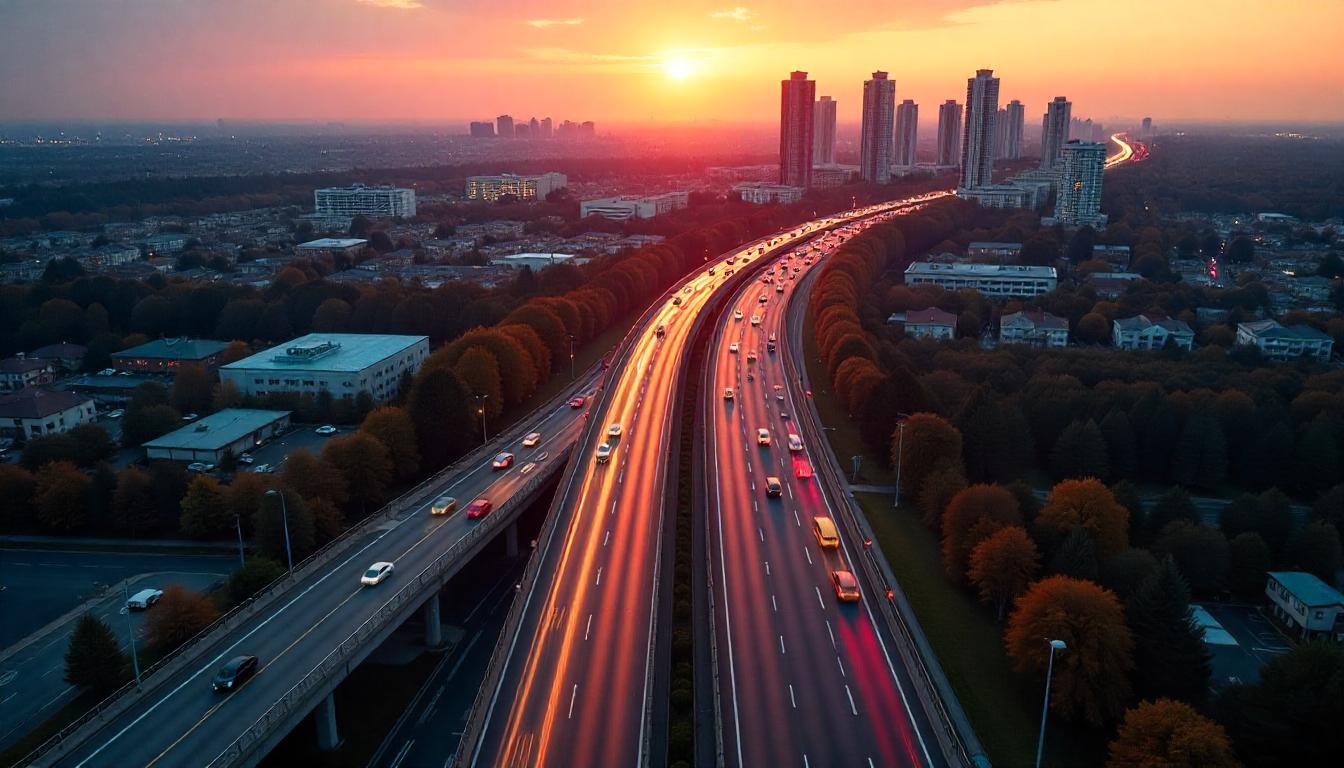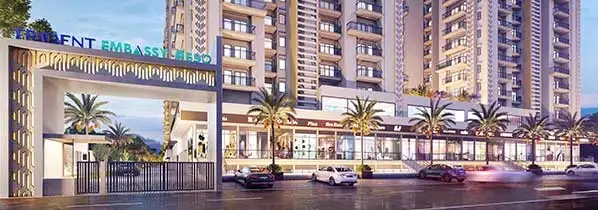
Impact of India’s Expressway Network on Real Estate Micro-Markets
How India’s Expressway Network Is Reshaping Real Estate Hotspots
In the quiet suburbs of Kurukshetra, a plot of land that sold for ₹20 lakh three years ago now commands ₹30 lakh—an impressive 15% annual appreciation. The catalyst? The Delhi–Amritsar–Katra Expressway, a 670-km marvel of modern infrastructure, is slashing travel times and unlocking new micro-markets for homebuyers and investors. Across India, expressways like this are not just roads; they’re arteries of economic growth, pumping opportunity into Tier-2 cities and suburban corridors. As India’s infrastructure ambitions take shape under the Bharatmala Pariyojana, the ripple effects on real estate are profound, transforming once-sleepy towns into vibrant investment hubs.
This blog examines how India’s expanding expressway network is redefining real estate micro-markets, with a deep dive into the Delhi–Amritsar–Katra Expressway and its impact on regions such as Kurukshetra, Ludhiana, and Zirakpur. From soaring property prices to shifting homebuyer preferences, we’ll unpack why these corridors are the next frontier for real estate growth.
India’s Infrastructure Push: Setting the Stage
The National Highways Authority of India (NHAI) currently manages a growing network of over 1.46 lakh km of highways, with significant expansion underway through flagship programmes like Bharatmala Pariyojana. According to the Ministry of Road Transport and Highways (MoRTH), as of July 2023, more than 11,000 km of highways were under construction, backed by investments exceeding ₹3 lakh crore.
Initiatives like the Smart Cities Mission further fuel this infrastructure boom, and Invest India’s strategic interventions aim to improve connectivity, reduce logistics costs, and drive nationwide economic growth.
Expressways are the backbone of this transformation. By reducing travel times, enhancing freight movement, and linking urban centres to peripheral regions, they create a multiplier effect on local economies. The Delhi–Mumbai Expressway, for instance, has already reduced the travel time between the two cities from 24 hours to 12, boosting demand for residential and commercial properties in areas such as Sohna and Vadodara. Similarly, corridors like the Mumbai–Nagpur Samruddhi Mahamarg have driven a 3.7x surge in land prices near key nodes since 2022. These trends underscore a broader truth: where expressways go, real estate follows.
The Delhi–Amritsar–Katra Expressway: A Case in Point
The Delhi–Amritsar–Katra Expressway, a 670-km, four-lane greenfield project, is one of India’s most transformative infrastructure initiatives. Connecting the Bahadurgarh border near Delhi to Katra in Jammu and Kashmir via Haryana and Punjab, it slashes the journey from 14 hours to just 6. Slated for completion by 2026, the expressway links key cities such as Kurukshetra, Ludhiana, Jalandhar, and Kathua, while promoting religious tourism to sacred sites like the Golden Temple and the Mata Vaishno Devi Temple.
This corridor is already reshaping real estate dynamics across northern India. While major metros continue to dominate formal market reporting, anecdotal evidence and local developer inputs suggest that cities like Kurukshetra are seeing a rise in plotted developments, driven by improved connectivity and growing investor interest. In Ludhiana, industrial and residential demand is on the rise, with commercial rentals increasing by 10–15% in key micro-markets. Jalandhar, known for its strong NRI base, is witnessing a surge in premium plotted layouts and gated communities, with “weekend home” offerings gaining popularity.
The expressway’s supporting infrastructure, such as trauma centres, bus bays, and planned interchanges, further enhances its accessibility, transforming these adjacent regions into high-potential zones for both developers and homebuyers.
How Expressways Transform Micro-Markets
The real estate ripple effect of expressways follows a predictable yet robust pattern:
Land Acquisition and Infrastructure Development: As expressway projects are announced, land prices in adjacent areas begin to climb. Speculative investments drive early appreciation, as seen in Palwal and Sohna along the Delhi–Mumbai Expressway, where land values rose by 10– 15% following the announcement.
Developer Entry: Reputed developers enter with plotted developments, townships, and commercial projects. For instance, the Yamuna Expressway witnessed a surge in integrated townships following the announcement of the Noida International Airport, with developers like Ace Group launching high-end residential projects.
Commercial and Industrial Growth: Expressways attract logistics hubs, warehouses, and retail centres. The Mumbai–Nagpur Expressway, for example, has spurred warehousing demand in Nashik and Aurangabad, with rentals rising by 15–20% in key nodes.
This cycle transforms micro-markets into self-sustaining ecosystems, blending residential, commercial, and industrial growth. According to ANAROCK, expressway-linked regions have recorded significant appreciation, ranging from 41% over three years to as high as 83% over a decade, depending on location and infrastructure quality. Such trends make these corridors increasingly attractive to both homebuyers and long-term investors.
The Panchkula–Zirakpur Corridor: A Local Lens
Closer to home, the Panchkula–Zirakpur corridor exemplifies how road infrastructure fuels real estate growth. The PR-7 Road, connecting Zirakpur to Chandigarh’s international airport, has turned this belt into a hotspot for plotted developments and gated townships. NH-5, linking Chandigarh to Shimla, further enhances connectivity, making Zirakpur a preferred destination for families and NRIs seeking low-density, lifestyle-driven communities.
Projects like Trident Hills in Panchkula reflect this trend, offering premium plots and 4 BHK low‑rise floors with modern lifestyle amenities. They cater to buyers who want to be near Chandigarh’s urban core while enjoying suburban peace.
This corridor is transforming micro-markets into self-sustaining hubs by blending residential, commercial, and industrial growth. For instance, Zirakpur, located next to Chandigarh, has seen property prices rise approximately 65% over the last five years. The rental market is equally strong, with rents projected to increase by over 10% in 2023..
Its strategic location close to IT hubs in Mohali and industrial clusters in Derabassi further fuels demand, making it a top micro-market for long-term real estate investment.
Homebuyer Behaviour: What Has Changed
The Indian homebuyer of 2025 is discerning, prioritising connectivity, lifestyle, and future-readiness. For instance, along the Dwarka Expressway, property values have surged, as highlighted by ANAROCK's Micro Market Report, average prices climbed 83% over the past 6.5 years. Meanwhile, broader market indicators show a 14% rise in housing sales across seven major Indian cities in Q1 2024, reflecting sustained demand supported by infrastructure upgrades.
Key trends shaping buyer preferences include:
Low-Density Communities: Buyers favour gated townships with green spaces, as seen in projects along the Yamuna Expressway and Zirakpur–Derabassi belt.
Metro and Airport Access: Proximity to metro lines (e.g., Namo Bharat RRTS) and airports (e.g., Noida International Airport) is a top priority for 72% of buyers.
Proximity to Economic Hubs: IT professionals and entrepreneurs seek homes near industrial corridors like Mohali or logistics hubs like Bhiwandi.
Second-Home Demand: NRIs and urban professionals are investing in weekend homes near tourism-driven corridors like the Delhi–Amritsar–Katra Expressway.
These shifts reflect a broader aspiration for balanced living, combining urban access with suburban serenity. As CBRE India notes, buyers are increasingly willing to pay a premium for properties that offer “future-ready infrastructure and lifestyle amenities”.
The Investment Case: Price Appreciation, ROI, and Growth Potential
Expressway-adjacent micro-markets are proving to be goldmines for investors. Consider these examples:
Dwarka Expressway, NCR: Home prices have surged by 79% over the past five years, driven by expressway upgrades, metro connectivity, and premium project launches. Notably, the corridor saw a 58% YoY price increase in Q4 2024, making it one of India’s fastest-growing real estate micro-markets.
Ludhiana / Mohali region: Though specific annualised returns are mixed, the launch of major expressway links and industrial hubs has spurred strong demand for residential and commercial plots across this corridor.
Zirakpur–Derabassi–Panchkula belt: Real estate portals report residential inventories experiencing double-digit appreciation (12–16%) YoY in plot and low-rise inventory for 2023, reflecting robust local demand-balancing Chandigarh's premium market.
Residential Supply Spike: Gated communities, plotted townships, and wellness-focused enclaves are replacing farmland and vacant stretches.
Commercial Activity: With malls, co-working hubs, and lifestyle centres coming up, micro-markets like Dhakoli, Peer Muchalla, and PR-7 Belt are seeing increased footfall.
According to PropTiger’s Real Insight Residential Q1 2025 report, Delhi–NCR housing prices remained stable at ₹8,106 per sq ft, despite national cooling, indicating strong, sustained demand in expressway-linked micro‑markets. Areas connected via major expressways, such as the Delhi–Mumbai and Delhi–Meerut corridors, continue to benefit from enhanced accessibility, which supports long-term real estate interests.
Supporting infrastructures, such as bus bays, metro lines, and interchanges along these routes, further enhance the appeal of these markets, marking them as promising zones for both developers and buyers.
The Road Ahead: Expressways as Real Estate Growth Engines
India’s expressway network is expanding rapidly, opening new corridors for real estate growth:
Ganga Expressway (Meerut–Prayagraj, ~593 km) is expected to open by late 2025, connecting key UP cities like Kannauj and Unnao and catalysing real estate and industrial interest along its route.
The Delhi–Mumbai Expressway (~1,350 km) set for completion by October 2025 is already redefining connectivity, including helipads and a significant drop in travel time.
Real Estate Impact
Along the Dwarka Expressway, housing prices nearly doubled from ₹9,434 to ₹18,668 per sq ft between 2020 and 2024. This surge, backed by robust launches and sales, underscores the corridor’s rapid real estate uplift.
Broader Economic Context
The World Bank estimates India requires approximately US$55 billion per year in urban infrastructure through 2037, an investment that supports expressway-driven development.
What This Means for Investors and Homebuyers
These expressway projects aren’t just roads, they’re transformational corridors reshaping regional destinies. With improved connectivity comes heightened interest from both developers and residents, making adjacent micro-markets fertile ground for long-term growth.
Conclusion: Seizing the Expressway Opportunity
India’s expressway network is more than a feat of engineering; it's a catalyst for real estate transformation. From Kurukshetra’s plotted developments to Zirakpur’s gated townships, these corridors are creating new hubs of opportunity for homebuyers and investors. The Delhi–Amritsar–Katra Expressway, with its promise of seamless connectivity and tourism-driven growth, exemplifies this trend, positioning micro-markets like Ludhiana and Jalandhar as the following significant real estate hotspots.
For those looking to capitalise on this boom, the time to act is now. Projects like Trident Hills in Panchkula offer a glimpse into the future of community living—blending connectivity, green spaces, and modern amenities. As expressways continue to reshape India’s real estate landscape, early investors stand to reap the rewards of a market poised for exponential growth. Whether you’re a homebuyer seeking a future-ready lifestyle or an investor chasing high ROI, India’s expressway corridors are the roads to watch.









